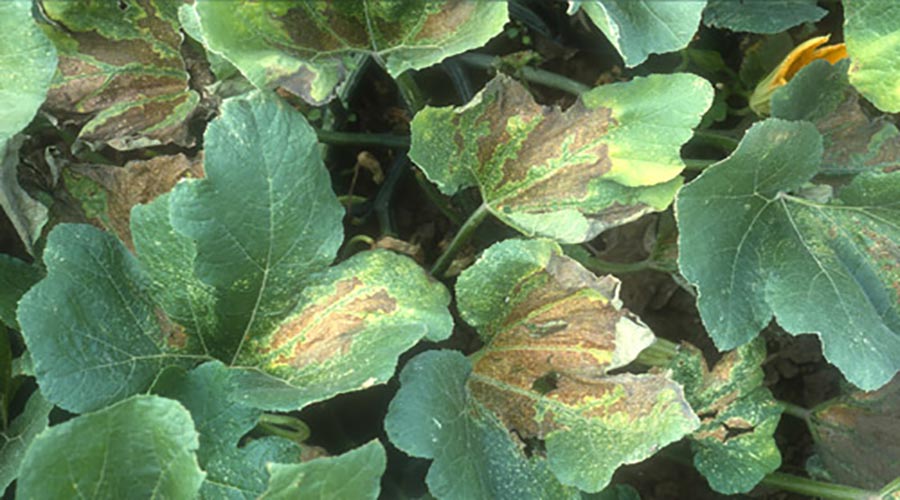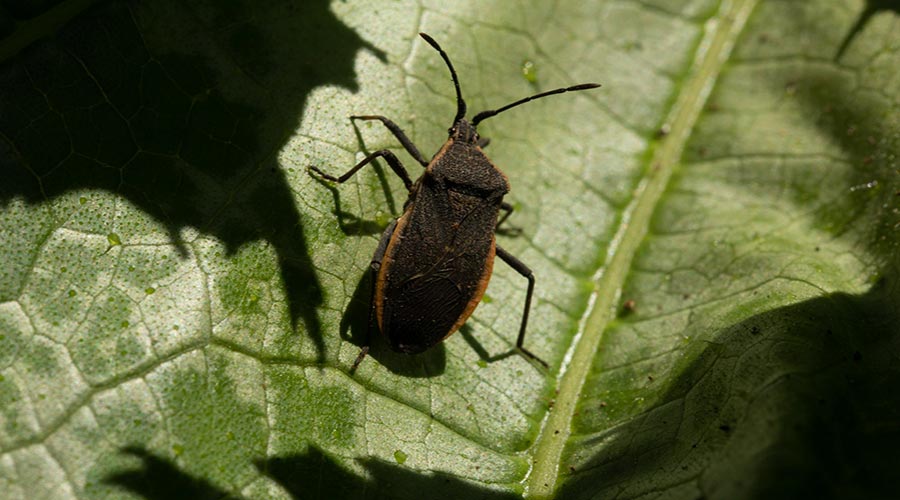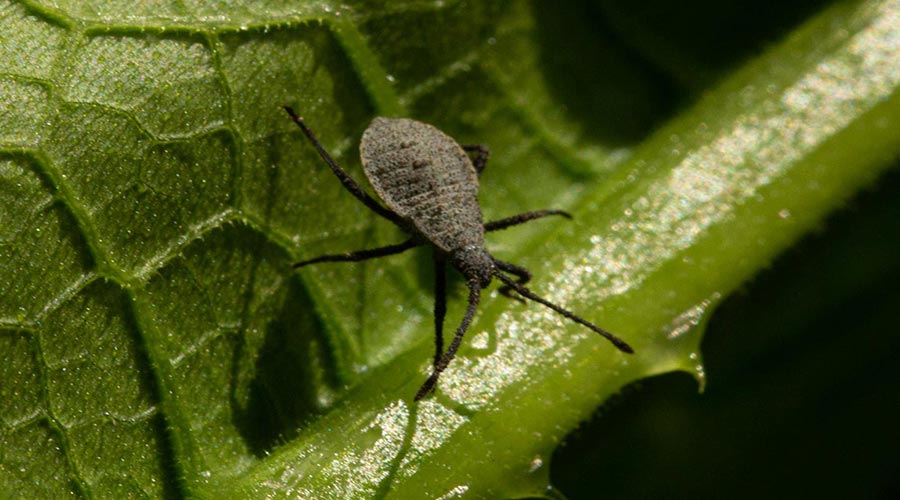What are squash bugs? How do you identify them? And how do you get rid of them?
The squash bugs are in the order of Hemiptera. They have 2 pairs of wings and when folded their tips overlap to form on X on their back. They also have an inverted triangle behind their heads. They are just over a half-inch long with a brownish or gray body and flat back. The edges and undersides of the abdomen have orange stripes. They are often confused with a stink bug but can cause much more damage to your plants. They are found on squash, pumpkin, and cucumber plants as well as other members of the cucurbit family such as watermelon and cantaloupe. They can fly but often just walk around in the plants often in clusters.
Young squash bugs called nymphs are whitish grey and have black legs. They move quickly and often in groups on the undersides of leaves but also on the stems and branches.
These bugs overwinter in dead leaves, vines, and under boards so it is important to clean up the dead plants and plant parts on which you found them at the end of the season – usually fall and winter.
What damage can squash bugs cause?

Squash bugs can be very damaging to your plants. They inject a toxin into the plant and suck the sap out of it with their sharp, sucking mouthparts. This causes yellow spots that turn brown. The flow of nutrients to the leaves is interrupted and the leaves then dry up and turn crisp and brittle. The leaves also sometimes have ragged holes.
How to deal with squash bugs?

We tend to pay most attention to these pests when we see them swarming over our vegetables, so we’ll deal with control first, and then when you’re sick of squash bugs, we’ll talk about how to prevent them next year!
Steps to Control
- Don’t use pesticides! Yes, I know pesticides are easy and fast, but they also can kill the beneficial insects. I do not use pesticides in my garden.
- If you can, catch squash bugs before they grow into adults, because they are more difficult to get rid of as adults.
- Pick egg masses on the undersides of the leaves in the morning and later in the day. If you scrape eggs off the leaves onto the ground, beetles will eat them. Because eggs hatch in about 10 days, be sure to check for them weekly.
- Place a board in the garden at night. Adults and nymphs will congregate underneath. In the morning collect the squash bugs and dispose.
- Keep checking plants daily, collect and destroy the bugs and the egg clusters on undersides of the leaves.
Steps to Prevent
- In the Fall, burn or compost old squash vines to get rid of any shelters for breeding and overwintering.
- A common recommendation is to not use mulches, such as straw or hay that provide a cool covered environment that squash bugs love! I use straw as a mulch in my garden.
- Practice crop rotation in your garden.
- Consider keeping vines covered until blossoming begins. Since there is only one generation of squash bugs per year, covering plants the first month of spring can help prevent them. Cover must be removed for pollination to occur.
- Companion planting with nasturtiums and tansy around your plants can help repel squash bugs.
- Select varieties of squash that are resistant to the squash bug, such as “Butternut” and “Royal Acorn”
Interesting question – Are they called squash bugs because they look squashed, or because they like squash plants??!


